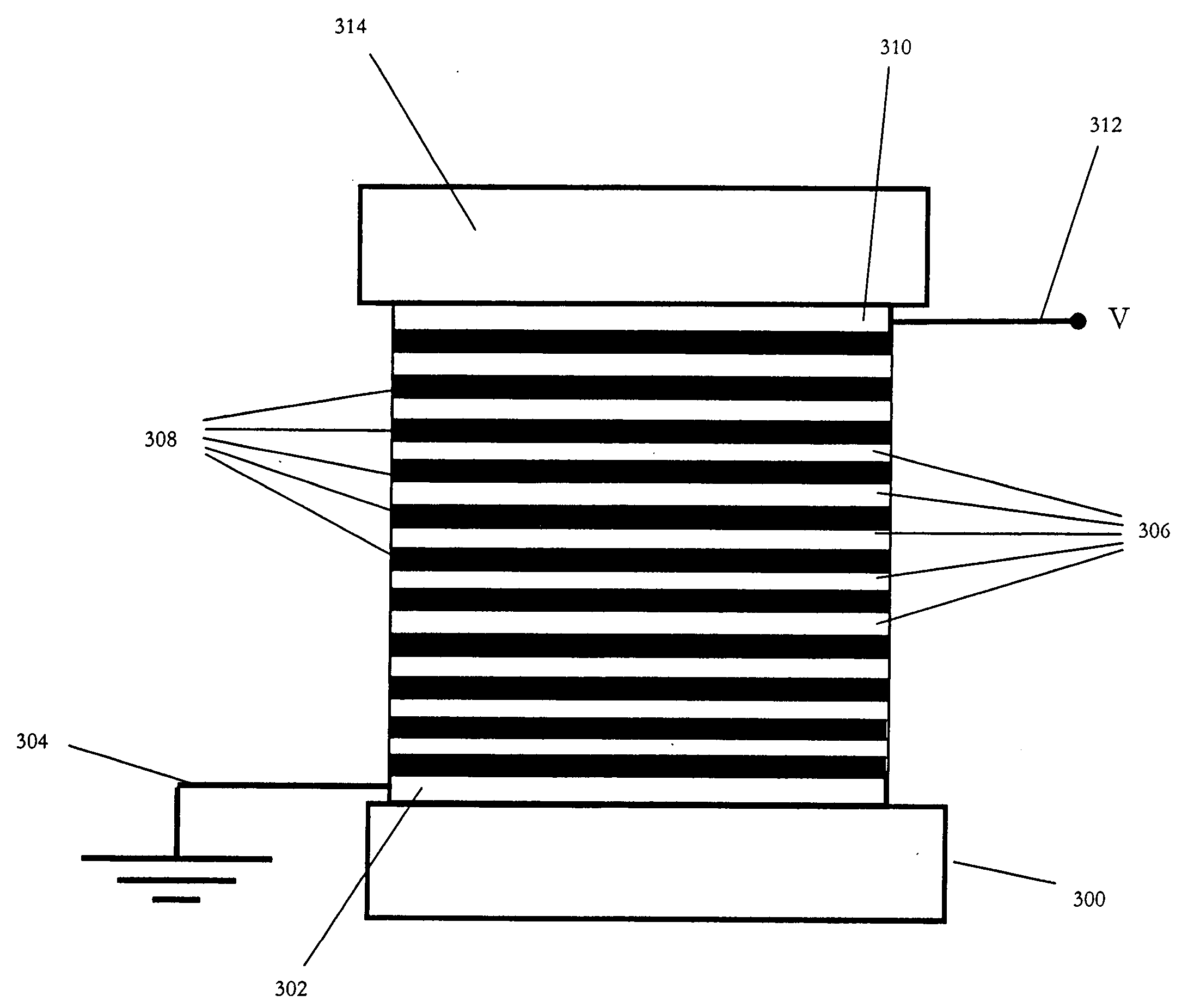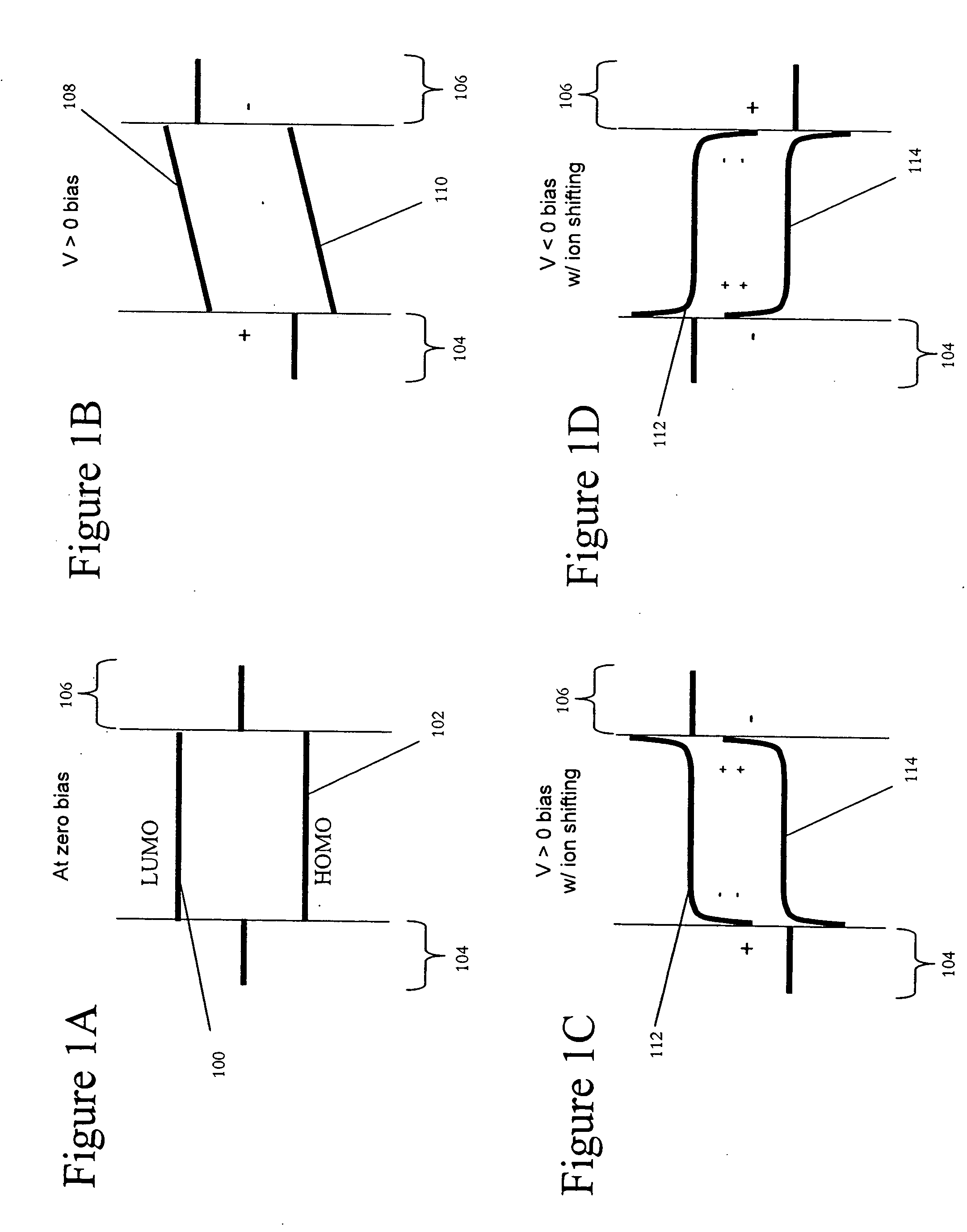Cascaded light emitting devices based on mixed conductor electroluminescence
a light emitting device and mixed conductor technology, applied in the direction of discharge tube luminescnet screen, discharge tube/lamp details, organic semiconductor devices, etc., can solve the problems of reducing the brightness of an entire panel, affecting the efficiency of light transmission,
- Summary
- Abstract
- Description
- Claims
- Application Information
AI Technical Summary
Benefits of technology
Problems solved by technology
Method used
Image
Examples
Embodiment Construction
[0022] As discussed above, device architectures involving the series connection of electroluminescent cells in the prior art require patterning not only of the electrodes, but also of the luminescent layer. Additionally in these prior art designs, the resulting light is generated in light emitting diode configurations. Exemplary embodiments of the present invention include stacked and cascaded electroluminescent (OEL) device architectures that do not require patterning of electroluminescent layer. These exemplary device architectures also utilize mixed conductors to produce electroluminescence without the need to produce diode structures. This feature allows the use of alternating current (AC) driving signals in exemplary embodiments of the present invention. Further, the present invention allows a simplified manufacturing process that may provide high yield and reduced manufacturing costs.
[0023] FIGS. 1A-D are intuitive energy diagrams illustrating some of the desirable properties...
PUM
 Login to View More
Login to View More Abstract
Description
Claims
Application Information
 Login to View More
Login to View More - R&D
- Intellectual Property
- Life Sciences
- Materials
- Tech Scout
- Unparalleled Data Quality
- Higher Quality Content
- 60% Fewer Hallucinations
Browse by: Latest US Patents, China's latest patents, Technical Efficacy Thesaurus, Application Domain, Technology Topic, Popular Technical Reports.
© 2025 PatSnap. All rights reserved.Legal|Privacy policy|Modern Slavery Act Transparency Statement|Sitemap|About US| Contact US: help@patsnap.com



